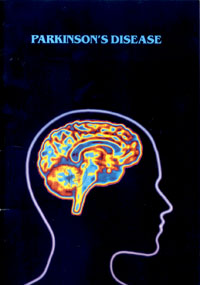Sign up to our newsletter Subscribe
Challenges and Solutions for Budget Impact Analysis of Gene Therapies

The prospects for Parkinson’s sufferers have improved immensely with the advent of new drug treatments. More recently the notion that transplantation could, either wholly or partially, alleviate the difficulties associated with Parkinson’s disease raised further hopes. As Fahn (1988) says, ‘We are living…
The prospects for Parkinson’s sufferers have improved immensely with the advent of new drug treatments. More recently the notion that transplantation could, either wholly or partially, alleviate the difficulties associated with Parkinson’s disease raised further hopes. As Fahn (1988) says, ‘We are living in an exciting time in the history of knowledge and treatment of Parkinson’s disease.’
Parkinson’s disease is a progressive, degenerative condition of the central nervous system which produces three main symptoms: tremor (shaking of the limbs or head); slowness of movement (bradykinesia), or inability to initiate it (akinesia); and muscular rigidity leading to bowed posture and immobile face. The symptoms may occur alone or in combination, and in most patients one symptom predominates. Tremor, whilst not universal, is the most common symptom. Parkinson’s disease generally strikes in later life, with few cases among those under 40; usually it becomes clinically recognisable at around the age of 60.
Two major advances can be identified in the treatment of Parkinson’s disease. Firstly, the introduction of levodopa in the late 1960s, which remains today the mainstay of treatment for Parkinson’s. Secondly, the MPTP1 experience of the late 1970s led to the emergence of selegiline therapy, which may slow the progression of the disease and extend the useful life of levodopa, in the early 80s. The 1980s also saw attempts to overcome the disabling effects of Parkinson’s disease via transplantation. Several hundred such operations have now been carried out. Whilst much research is continuing in this and other areas concerned with the treatment of Parkinson’s disease, it remains for the present an incurable malady even if its progression may be slowed and disabling symptoms ameliorated. As Langston (1990) says, ‘ … although we may still be far from being able to predict or prevent Parkinson’s disease, for the first time virtually all the components of such a strategy are being actively investigated. While prevention of the disease is still not within our grasp, it may no longer be beyond our reach.’ It is thus felt that the recent developments leading to a far greater understanding of the disease and its probable causes will enable a further landmark in the history of Parkinson’s disease to be achieved in the near future.
The previous OHE booklet on Parkinson’s disease was written in 1974. In the intervening years significant changes in the management of the disease have occurred, thus it is useful to reassess the means of treating this distressing affliction.
West, R.
(1991) Parkinson’s Disease. OHE Series on Health. Available from https://www.ohe.org/publications/parkinsons-disease-0/